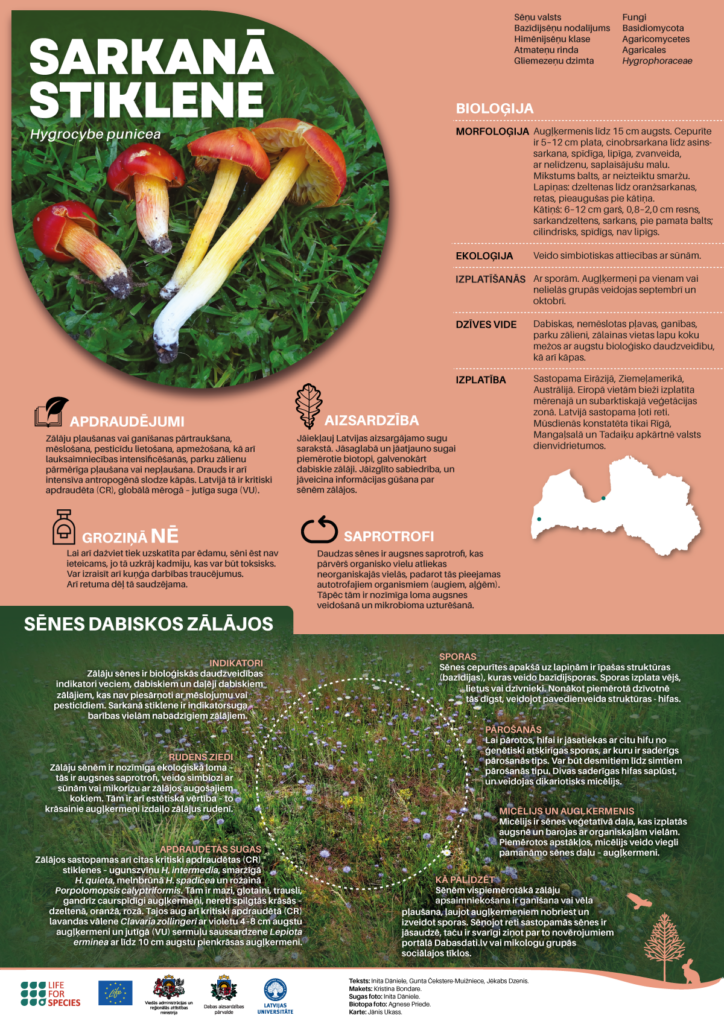Protected species of the month - the crimson waxcap
Did you know that protected fungi can also be found in meadows, not just in forests? This month, we highlight the crimson waxcap (Hygrocybe punicea), one of the most striking grassland fungi in Latvia.
Although in some countries the crimson waxcap is considered edible, it is not recommended to eat this mushroom, as it accumulates cadmium, which can be toxic and cause digestive disturbances. Of course, the species should also be protected due to its rarity.
The crimson waxcap is a grassland fungus with an important ecological role – it acts as a soil saprotroph, forms symbiosis with mosses, or sometimes mycorrhiza with trees growing in meadows. It also has high aesthetic value, as its colorful fruiting bodies decorate the grasslands in autumn.

You can read more about the species and how you can help protect it in its fact sheet (PDF version available here). Fact sheet design: Kristīna Bondare.
The body of the crimson waxcap reaches up to 15 cm in height. The cap is 5–12 cm wide, vermilion to blood-red, shiny, sticky, bell-shaped, with an uneven and often cracked edge. The flesh is white and has a faint smell. The gills are yellow to orange-red, spaced apart, and attached to the stem. The stem is 6–12 cm long and 0.8–2.0 cm thick, red-yellow to red, white at the base, cylindrical, glossy, and not sticky.
In Latvia, the crimson waxcap is classified as a Critically Endangered (CR) species.
